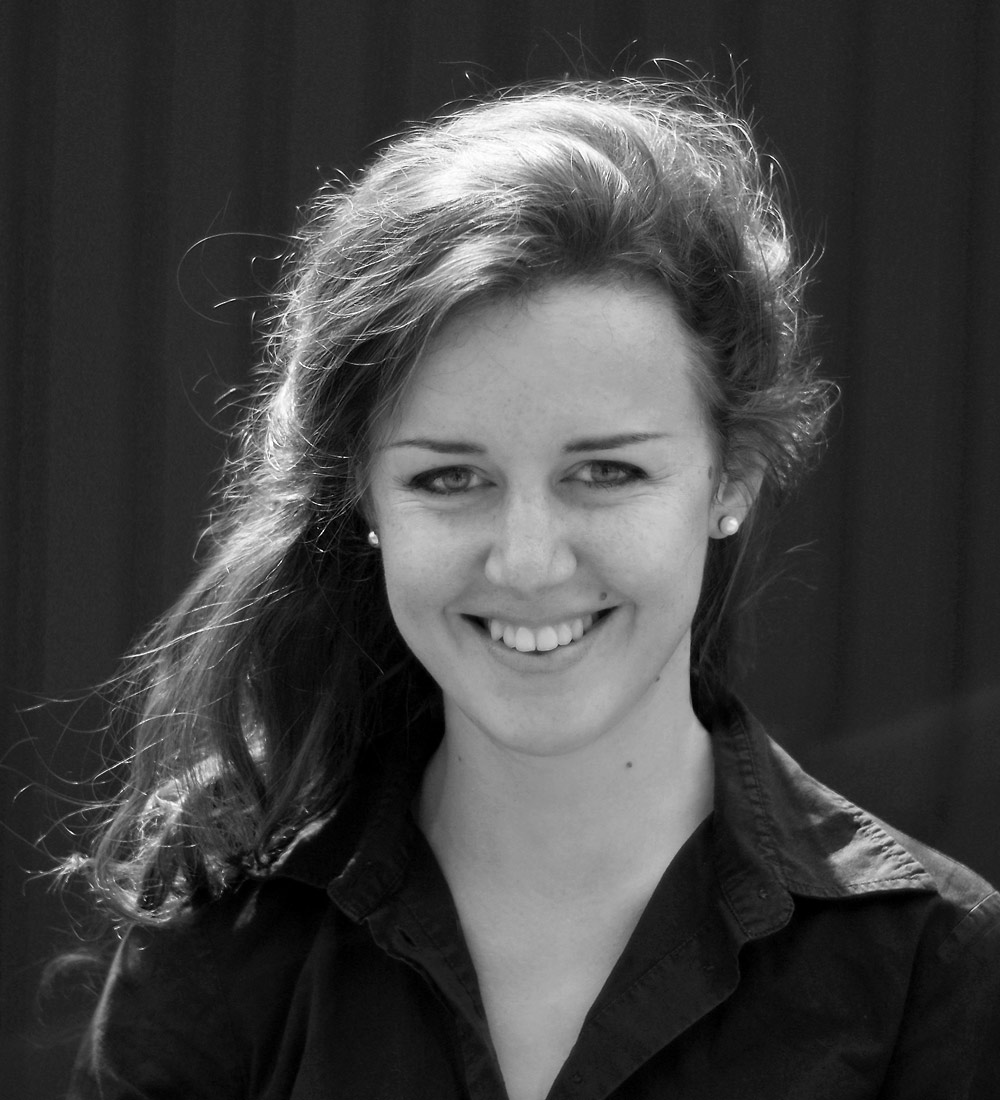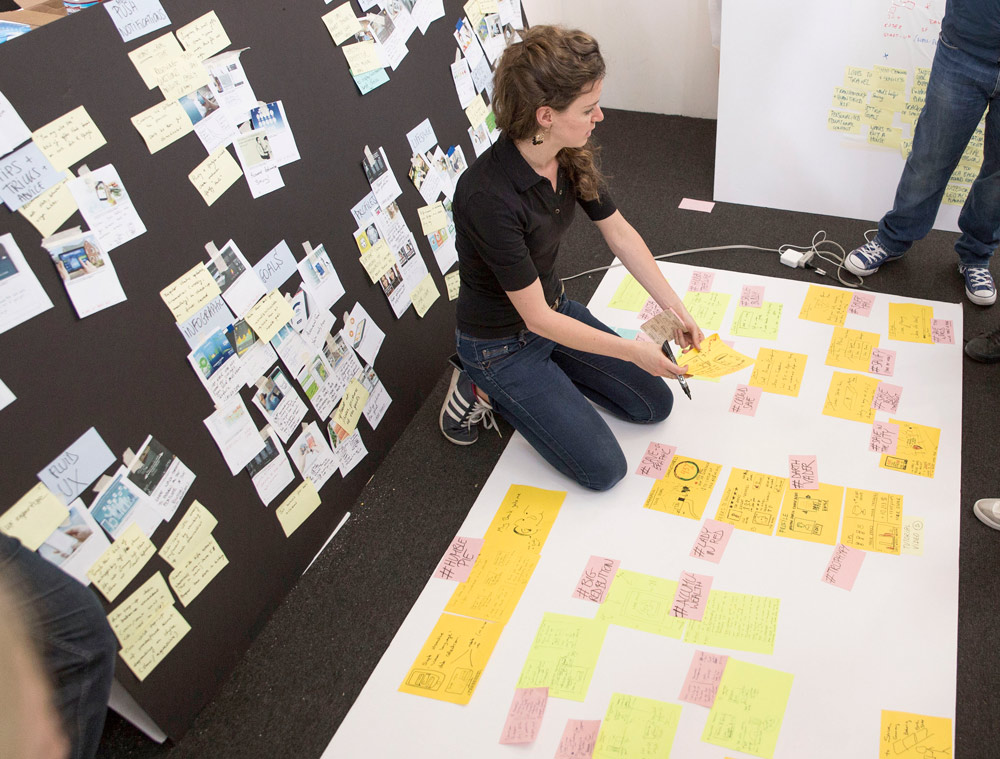Diana Schneider On Design Thinking, Social Innovation & Changing Corporate Environments
With a background in industrial design, technology management and product development, Diana Schneider runs BRISK: a network of design, engineering, 3D animation, psychology and product development professionals across Europe, collaborating to create new products/systems.
Fuelled by Belgian pralines and Italian coffee, Diana focuses on developing service scenarios and innovation processes for corporations, startups and public organisations across fintech, retail, health, energy, mobility, robotics. In addition, she guest lectures at Munich’s technology management school slash startup hub CDTM, devises new ways to combine immersive field research with business prototyping and is co-founding the “Be Makers” initiative to promote urban co-creation and builds toolkits for design ideation.
Diana discusses the keys to embedding a design thinking culture in organisations, opportunities for social innovators and how the education landscape is shifting.
Highlights from the interview (listen to the podcast for full details)
[Tom Allen] - Could you please share a bit about your background and what led you into founding Brisk? [1:37]
[Diana Schneider] - There were two elements that lead me to found Brisk. Firstly I have a very combined study background. I started studying product development in Detroit, Antwerp and Milan and then industrial design and technology management in Munich. When I joined the workforce, I wanted to apply these different elements in my work and I quickly realised that by joining a design agency that was more product centric, I worked on very product centric corporate projects and I was actually most passionate about the systems and the ecosystems behind the product. So understanding beyond the product specifications, what was happening with the consumers and how we could solve it.
The second point that led me to build Brisk was that alongside working for the agency I started working on self initiated projects with people I had met in college and other talented individuals I had met along the way. It was about how I could combine their different mindsets of data science, engineering and anthropology and work on things like design for privacy and design social impact. Using design to prototype urban solutions.
So in 2012, I started Brisk as a framework to be able to do these individual projects and then it grew from there to a network of people from different backgrounds, collaborating across countries on topics they really cared about.
What’s a recent project that you’ve particularly enjoyed working on? [3:08]
[Diana talks about how they have just finished a workshop series for the Fraunhofer Institute (a German research and science association) with the challenge of helping the research and scientific teams to combine their approach with a human centred design approach to help them apply design and prototyping for the first time.]
What are some of the key local issues or problems you’ve observed around Europe and where do you see some of the biggest opportunities for social innovation? [3:56]
One of the key issues is that teams have a natural tendency to solve the symptom versus the root cause of the problem.
Either by not understanding what the actual cause or the underlying root of the problem is or by making the wrong assumptions. The solutions that are built are just built to lighten the symptoms. [Diana talks about one of their design challenges and how people got to immerse themselves into the life of a wheelchair user. By doing this they really got to test and prove their assumptions as wrong.]
A lot of social innovation could be done by giving people the tools and understanding of what the actual cause of the problem is and really immerse themselves in an actual group and then co-create it (solutions) with them.
One of the reasons people have trouble empathising with other groups is that we have a natural tendency to cluster in our own world and surround ourselves with people of similar mindsets, cultures, languages and study fields. That creates a natural disconnection from other clusters or social groups.
Social innovation can really help to break these barriers between different groups and help people across groups co-create at a larger scale.
It can help people understand and empathise with the other group and create better solutions together.
What social impact initiatives are happening in Europe that you find particularly inspiring? [6:02]
I think the really inspiring things are happening at a really small scale. The projects where micro communities self organise, or grassroots initiatives where tech experts are using their information science and technology skills to help solve actual human problems. [Diana explains a few examples.]
As the Director of Brisk, what are some of the challenges you typically experience and how do you work around them? [6:55]
One of the challenges we experience is the misunderstanding of what design is and what it does.
Even if design thinking has been around for a couple of years and there has been a lot of work done around explaining to different communities what it can do.
Sometimes we're involved too late in the process when the entire product has already been defined or when specifications for a system are already being set. Then you have to start from scratch to help corporations or teams understand that design happens from the very first point of thinking about a challenge.
One of the challenges we face is being involved too late and then having to revert back and bring the teams back to the initial point.
As someone who facilitates Design Thinking workshops for management teams, what do you think are the most important considerations as a facilitator, to ensure that teams arrive to promising outcomes? [7:50]
I think one of the key elements is to give a really good immersive experience to the team that has to solve a problem.
You need to give the team that works on these projects actual real contextual insights into what the actual real human pains are that they are trying to solve.
The first big important thing about good facilitation is to break open corporate structures and basically go out of the building and get first hand, contextual experience.
Another important consideration is that you need to get teams to co-create with users, consumers and experts.
Corporate teams are often structured in a very closed environment, so actually helping them involve patients for instance or external experts or stakeholders in the design process in the very early phase of developing solutions and prototyping them, helps them to not just think about what they think the solution should be but really understand how people could solve the problem with a new product or service.
The third thing is to make things tangible quite quickly.
As soon as you talk about things you can end up in endless meetings about a concept, but making it physical and tangible helps you converge towards a solution more concretely and quickly. That helps the teams in their corporate structures to get the feedback and management 'go' to develop things internally as well.
What design thinking or business tools or processes do you most commonly use when tackling urban challenges? [9:56]
We divide our tools into three different categories:
1. Tools that are linked around immersive research. These are the tools that help you gain insights in the field. Empathy tools of observing, interviewing and self-testing. Things like design diaries, cultural probes and research kits.
Most teams are not used to gathering qualitative data about things. They are used to surveys and quantitative data but not really gathering in depth insights about how people use things.
2. Mapping tools. When you've gathered all the insights in the field, how do you abstract them, cluster them, structure them into actual actionable elements that you can use for your design challenge? Things like storyboarding, service journeys, process mapping - things that help you structure your thinking and communicate it.
3. Ideation tools. How do I get a team who may not be used to developing solutions or creative ideas to break the fear or sketching or thinking they're not a creative type. So collaboratively and in short timeframes create new ideas.
For over 5 years you’ve lectured at the Center for Digital Technology and Management. How have you seen the education sector shift in that time and where do you see it heading? [11:09]
The education system has become way more entrepreneurial and customised to the students. It's less about giving lectures and theory to people that they can then reflect on or repeat in a test.
Education [now] is more about giving students the tools to adapt to change, analyse situations and find their own solutions together. It's more about fostering a mindset of trial and error, testing quickly and combining mindsets from different faculties together. It's more about giving students the tools to become entrepreneurial about the way they approach their own education and studies.
It's challenging though, because that means you need to reflect or rethink the role of a student or educator. Students need to understand that education is something that they can take into their own hands and be intrinsically motivated to build the education they want. Teachers need to understand that their role is shifting away from lecturing and towards mentoring and adapting towards the individual needs of students and helping them to become resilient in fields that are quickly evolving.
Teachers need to understand that they need to build strength in students to define entirely new industries that we can't even predict at this point.
What advice would you give to business leaders who are keen to create a strong culture of innovative design thinkers in their company? [13:08]
Think beyond the gimmick. Design thinking has been around for a few years now and some companies think that doing a two hour entertaining workshop will help them become design thinkers.
It's a great start. But really creating a strong culture of innovative design thinking is more than being creative on a Friday afternoon and then reverting back to business on Monday. It's about going beyond the gimmick of the post its and creative room with funny-coloured chairs. It's about allowing a mindset of reframing problems and creating a culture where people get a real desire to get to the bottom of a problem and then giving them the resources to solve it and question the way things are being operated.
Being a cultural shift, it is actually quite uncomfortable to allow design thinking in your organisation. It's about creating a culture in which prototyping, trial and error, being critical, questioning things is valued and at every level of the organisation people have the same approach to wanting to solve things.
Become more open to external influences. It's about collaborating across companies or big corporations collaborating with startups or with different experts. It's about opening up quite rigid structures to create some collective problem solving.
Design thinking is basically about removing all the barriers that may exist in your company or startup that have been hindering people from trying to prototype things, solve things and analyse things.
It's about giving room to pilot projects in your company. It's about allowing a strong culture of bottom up innovation.
Could you please recommend a few inspirational books to our listeners? [15:45]
[Diana discusses the books below in detail.]
Initiatives, people and resources mentioned on the podcast
Recommended books
- Dark Matter and Trojan Horses by Dan Hill
- Hooked: Creating Habit Forming Products by Nir Eyal
- Antifragile: Things That Gain From Disorder (Incerto) by Nassim Nicholas Talib











